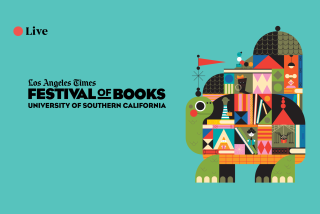A bold, impassioned quest
Joseph NEEDHAM was a brilliant scholar who seemed to care about, and revel in, everything. A leading biochemist at Cambridge University, a flamboyant leftist, an accomplished linguist, Needham (1900-1995) had an intellectual range at age 25 that impressed colleagues so much that he was said to be on his way to becoming the Erasmus of the 20th century.
One summer day in 1937, a knock came on his wooden door at Cambridge from the hand of a comely graduate student from China named Lu Gwei-djen. Needham was married, but it did not prevent his magnetic interest in Lu. Meeting her changed the trajectory of his life, and of Western scholarship about China.
As the two lay naked in bed sharing a smoke one evening, Needham asked Lu to show him how to write “cigarette” in Chinese. He was immediately captivated by the timeworn beauty of the ancient characters, and declared his ambition to learn the entire language. He did so swiftly, and it only fed his curiosity and spurred his determination to understand the origins and achievements of China’s illustrious culture, one of the most complex in human history.
That project consumed the rest of his life. Volume by volume, Needham created “Science and Civilisation in China,” a breathtakingly panoramic study of topics including astronomy, politics and zoology, and the interconnectedness of all. Wonderfully written, it became a 24-volume foundation for, and an inspiration to, generations of China scholars, journalists and writers drawn to the country’s colorful enigma.
One such writer was Simon Winchester, the skilled storyteller and author of the lively “The Professor and the Madman” on the making of the Oxford English Dictionary. Like many avid readers of books about China, Winchester repeatedly went back to “Science and Civilisation.” Unlike others, Winchester decided to decode the man behind it.
What a story it turns out to be. “The Man Who Loved China” is a charming literary and cultural adventure that captures the unadorned brilliance and infectious enthusiasm of this remarkable man, with his outsized intellectual ambition and his endearing zest for life.
His own scholar’s robe
Needham won an assignment to China as a British diplomat during World War II. Landing in Chungking, he had a local tailor make him a floor-length Chinese scholar’s robe of blue silk, which he wore every day. He traveled extensively and at considerable risk, navigating the desert to see the Buddhist cave art at Dunhuang, skirting Japanese enemy lines along China’s southern coast and collecting cartloads of artwork and books and cultural treasures. (The British diplomatic service paid for unlimited shipments home.)
Needham’s eye roved constantly, resting on attractive women here and there. But it landed more often on the marvels of Chinese civilization -- the abacus, the chopstick, the invention of movable type. Needham gradually learned of China’s great discoveries -- paper, gunpowder and tea are among the most famous -- but the list grew so long and varied that it belied the common assumption in the West at the time that China was an exotic but essentially crude culture.
Needham’s study demonstrated otherwise. His easy ability to make friends helped his research by winning the confidence of Chinese scientists and scholars who assisted his investigations. In one instance, a meteorologist who was president of the prestigious Zhejiang University was so impressed with Needham and so concerned with World War II’s destruction of scholarly material in China that he unexpectedly sent Needham an extensive trove of rare books, critical to later research.
After four years in China, Needham returned to Cambridge. For the rest of their lives Lu remained his companion, confidante and consigliere. Needham’s wife Dorothy apparently accepted the arrangement. Joseph and Dorothy Needham remained married until her death in 1987. Two years later, Needham married Lu.
When Needham conceived his masterwork, he envisioned seven volumes. He was only off by 17. It took the rest of his life, and then some, to complete the study. The first volume was published by Cambridge in 1954, to universal acclaim. Each successive volume brought more praise. When Needham died in 1995, having reluctantly agreed to let coauthors help him finish, a few uncompleted volumes remained. The final one came out in 2004.
Winchester is an engaging writer and brisk storyteller. His one failing in this book is to skate too quickly over what came to be known as the “Needham question”: Why did China, so technologically advanced in antiquity, essentially get stuck after AD 500? In the following centuries, as modern science thrived in the West, why was China left behind?
Drawn to a mystery
It is an enduring mystery of Chinese history, and it captivated Needham for all the years he worked on his masterpiece. In Winchester’s view, Needham “never fully worked out the answers.” After tossing out a few conventional theories -- China became too bureaucratic, it never developed a mercantile class -- Winchester blithely suggests that such a quest is ultimately “quite fruitless.”
To the contrary, it is a mystery that merits delving into, particularly when China is emerging as a candidate for superpower of the coming century. If China’s complex cultural burdens stifled innovation in the past, will they prevent it from rising again? Will China surge briefly, only to sputter into a second-rate power? Or will it buck history and surpass the U.S.? Questions worth dwelling on.
--
Seth Faison is the author of “South of the Clouds: Exploring the Hidden Realms of China.”
More to Read
Sign up for our Book Club newsletter
Get the latest news, events and more from the Los Angeles Times Book Club, and help us get L.A. reading and talking.
You may occasionally receive promotional content from the Los Angeles Times.






